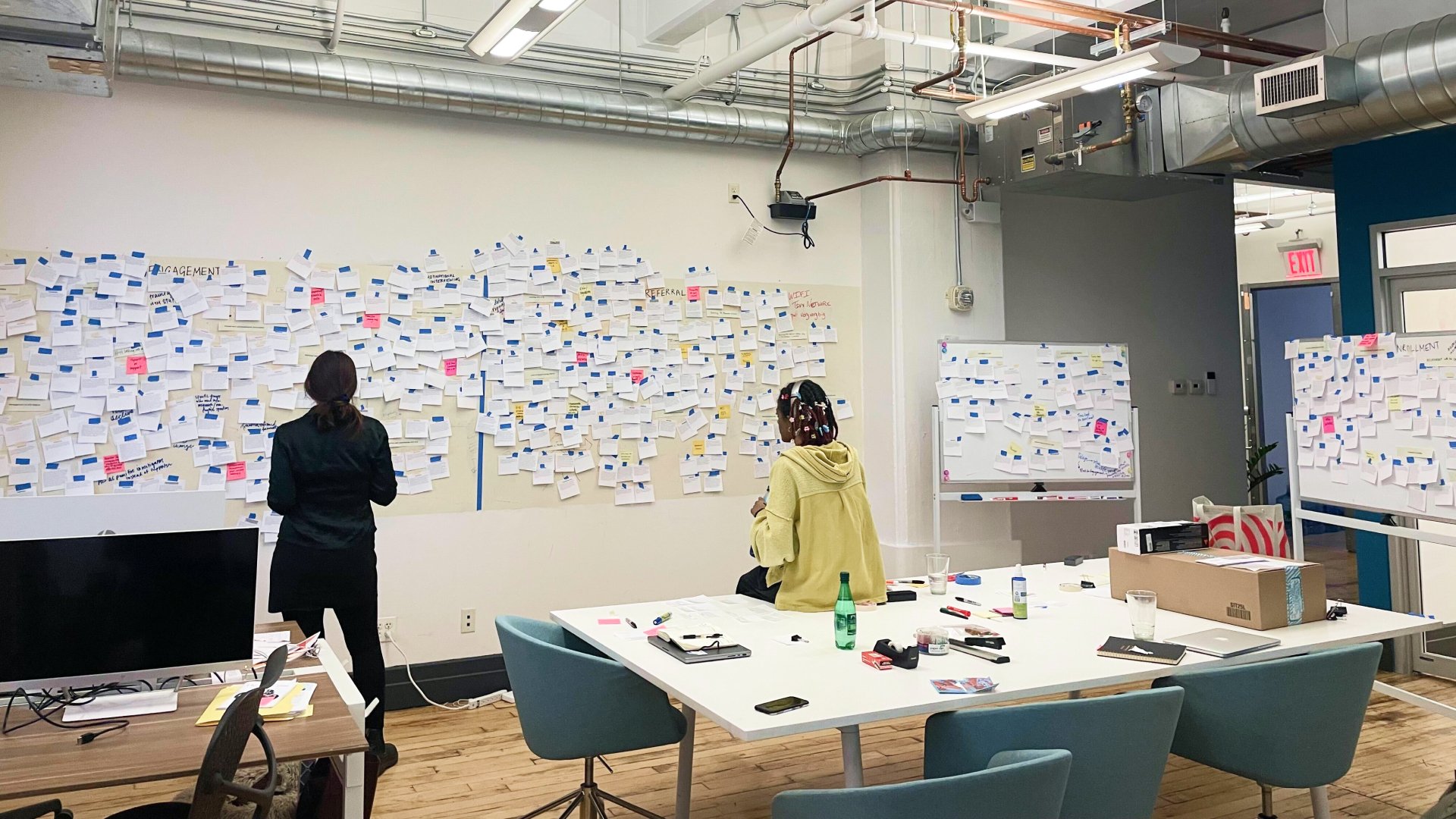
Collaborative
Systems Transformation
I’m an experienced Design Strategist and Researcher. I use participatory methods in multiscale systems design.
01 Case Study
Prevention Pathways
How can more families access prevention services, early and voluntarily, to reduce child abuse reports?
I led a project with the Public Policy Lab in partnership with New York City’s child welfare agency and public hospital system to improve referral pathways, connecting more families to prevention services and reducing unnecessary child abuse reports. New York City offers these free services to support families and reduce the chance of a child being removed from the home by child protective services. However, the number of families using them had declined. Read the case study.
Project Management, Design Research, Agile Methodology,
Co-design, Pilot, Implementation
Partnership
NYC Health+Hospitals, NYC Administration for Children’s Services, Casey Family Programs

Empowerment that uplifts change.
02 Case Study
Observational Research for Vaccines for Children
How can child vaccine safety information be communicated most effectively
to families?
Healthcare professionals encounter a diverse set of challenges when discussing vaccine safety with parents and caregivers, relying on a wide range of communication tools and strategies. As part of a team at The Public Policy Lab, we conducted an observational research study to examine how different messaging approaches and contextual factors influence vaccine safety discussions. Read the case study.
Observation Design Research, Agile Methodology
Partnership
Research Triangle Institute International, United States Centers for Disease Control and Prevention

Process that embraces ambiguity.
03 Case Study
Futures of Public Library Work & Space
How is the role of the public library worker shifting over time?
Engaging with a community of branch staff at the Brooklyn Public Library, this project explores the current state of public library work and reveals visions of the future of library work using a participatory design process. Our team developed multiple research and speculative design probes throughout the process, such as a Job Description Activity and a Library Futures Card Game, to collaborate with branch staff. Read the case study.
Probes, Semi-Structured Interviews, Facilitation, Ethnography, Speculative Design
Collaborators
Grace Mervin, Elizabeth Hartley, Forrest Sparks, Brooklyn Public Library, Parsons DESIS lab

Exploration that reveals the system.
04 Case Study
Critical Service Blueprint
How do infrastructure and space change the state of a service?
In this project, we collaborated with a food donation non-profit, AmpleHarvest.org, to critically explore the current and future state of the service using service blueprinting. We took a visual and spatial approach to map the current state of the service, informed by research with pantries and gardeners and explored a possible future state of the service in Tribal Nations Territory through secondary research and geospatial analysis. Explore what we learned.
Semi-Structured Interviews, Service Mapping, Secondary Research, Visual Storytelling
Collaborators
Aloma Antao, Camille Girard, AmpleHarvest.org

Design that nurtures sharing.
05 Case Study
Shares App
How can technology foster a resilient community of sharing?
Shares is a location-based platform that enables people to find and share useful equipment with their network and community. For hobbyists, getting temporary access to the missing equipment they need for their next endeavor can be difficult and complicated. Most people own useful equipment that is underutilized when others could benefit from the utility when they’re not. I adopted a research-led approach to defining the initial problem space and explored possible solutions through a human-centered design process.
Human-Centered Design, Design Research, UX Design, UI Design




